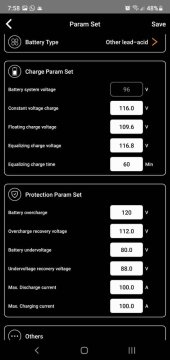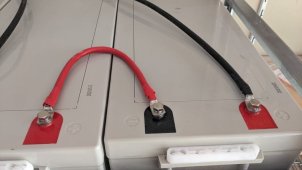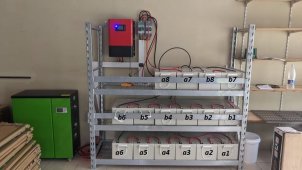Hi guys,
I've got a 15kw offgrid system from China, cheap unbranded stuff and now, of course, I'm having issues...
So right now it feels as if the battery are running WAY to fast..
I have a 96V system with a paralleled series of 8 AGM 12v280AH(total16)
I've ran few tests with the batteries and what caught my attention is the first battery, closest to the Inverter load..
Below is the plan and all the readings I recorded:
Here is an unfinished chart of my layout (I'm waiting for information from the installer to complete the chart, as I have additional issue where breaker trip when connect the grid to the inverter).

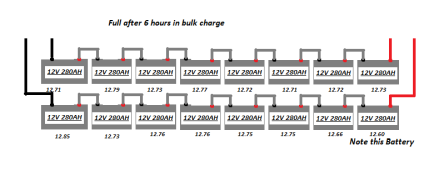
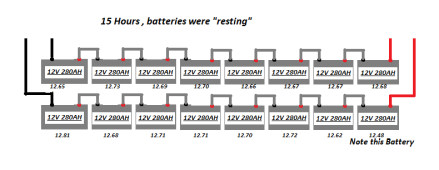
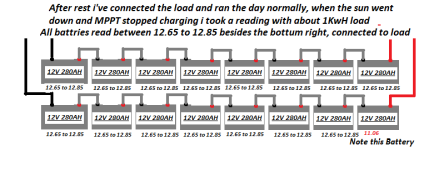
1. Does this mean the battery is dead?
2. Can you guys spot any mistakes with this setup?
3. Anything better I could do?
Thanks,
Nezek
I've got a 15kw offgrid system from China, cheap unbranded stuff and now, of course, I'm having issues...
So right now it feels as if the battery are running WAY to fast..
I have a 96V system with a paralleled series of 8 AGM 12v280AH(total16)
I've ran few tests with the batteries and what caught my attention is the first battery, closest to the Inverter load..
Below is the plan and all the readings I recorded:
Here is an unfinished chart of my layout (I'm waiting for information from the installer to complete the chart, as I have additional issue where breaker trip when connect the grid to the inverter).




1. Does this mean the battery is dead?
2. Can you guys spot any mistakes with this setup?
3. Anything better I could do?
Thanks,
Nezek
Last edited:



